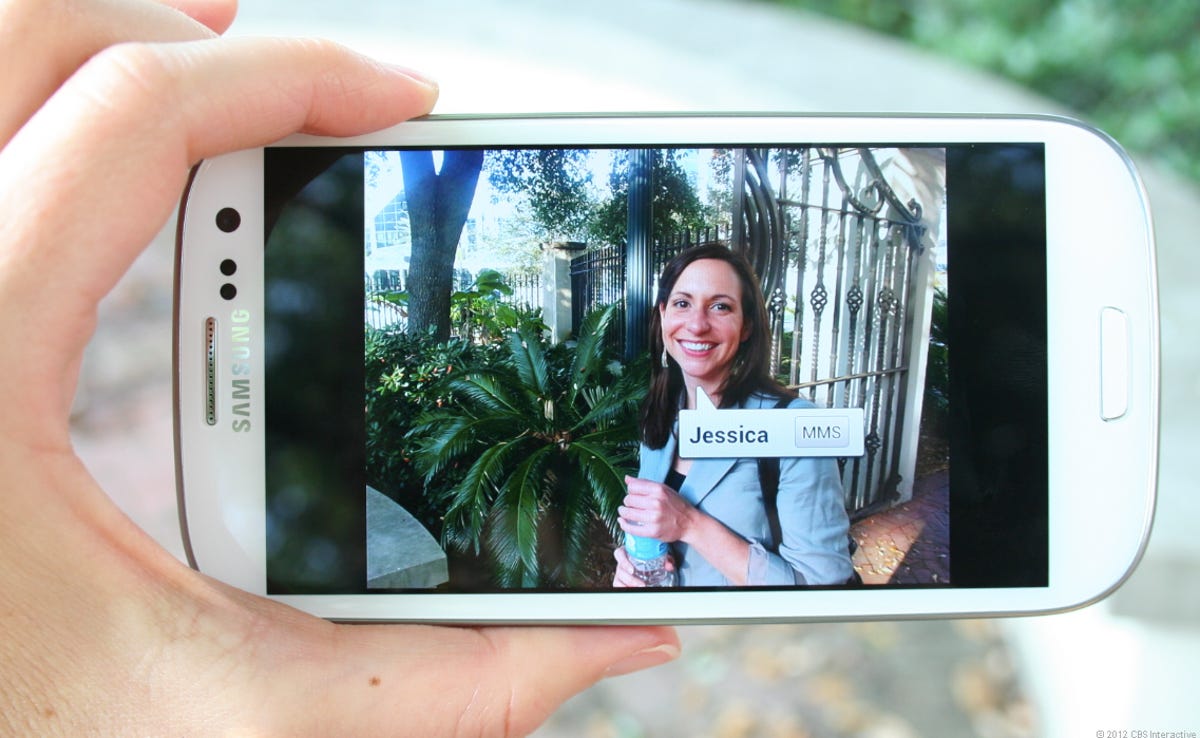
Jessica Dolcourt/CNET
Editors’ note: CNET has yet to review the Verizon, Sprint, and U.S. Cellular versions of this phone, but if you want to get an idea of what you can expect from them, read the full reviews for the Samsung Galaxy S3 for T-Mobile and AT&T.
Within the month of June, Samsung and its five carrier partners will sell a whopping 18 versions of the Samsung Galaxy S III (S3) Android 4.0 Ice Cream Sandwich superphone, what when you count variations in color and capacity.
AT&T, for instance, will sell the Galaxy S3 in three hues, including an exclusive red shade later this summer. Yet if you’re dying for 32GB of storage with AT&T, you’ll need to plan to use a microSD card.
While prices seem to be level cross-carrier, the data network is another major differentiator. Sprint and T-Mobile have yet to launch LTE networks. For now, T-Mobile’s Samsung Galaxy S3 phones will ride its HSPA+ 42 network, which independent evaluator RootMetrics reports is actually pretty fast. Sprint will offer 3G.
Meanwhile, regional carrier U.S. Cellular covers 25 percent of its customer base with LTE, with plans to expand to 54 percent 4G coverage by the end of the year.
If you intend to bag yourself a Galaxy S3 soon and you have carrier flexibility, take a close look at the chart above. The seemingly identical phones vary more than you think.
Read my full hands-on take of the Samsung Galaxy S3 here.


Now playing:
Watch this:
Samsung Galaxy S III is a looker
3:54
Within the month of June, Samsung and its five carrier partners will sell a whopping 18 versions of the Samsung Galaxy S3 Android 4.0 Ice Cream Sandwich superphone, what when you count variations in color and capacity.
AT&T, for instance, will sell the Galaxy S3 in three hues, including an exclusive red shade later this summer. Yet if you’re dying for 32GB of storage with AT&T, you’ll need to plan to use a microSD card.
While prices seem to be level cross-carrier, the data network is another major differentiator. Sprint and T-Mobile have yet to launch LTE networks. For now, T-Mobile’s Samsung Galaxy S3 phones will ride its HSPA+ 42 network, which independent evaluator RootMetrics reports is actually pretty fast. Sprint will offer 3G.
Meanwhile, regional carrier U.S. Cellular covers 25 percent of its customer base with LTE, with plans to expand to 54 percent 4G coverage by the end of the year.
If you intend to bag yourself a Galaxy S3 soon and you have carrier flexibility, take a close look at the chart above. The seemingly identical phones vary more than you think.
Read my full hands-on take of the Samsung Galaxy S3 here.


Now playing:
Watch this:
Samsung Galaxy S III is a looker
3:54



